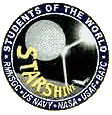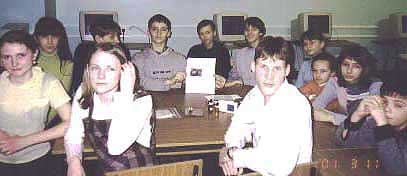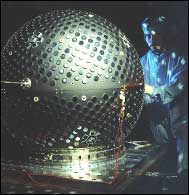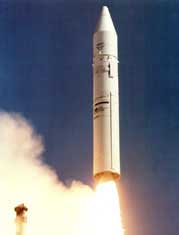StarShine-3:
 |
Several small, optically reflective spherical "STARSHINE" student satellites,
built by the U.S. Naval Research Laboratory, are being deployed by NASA
from Hitchhiker canisters in Space Shuttle cargo bays, as well as from
an Athena unmanned launch vehicle, into highly inclined low earth orbits
at a rate of once every year or so.
The satellites are covered by nearly 1000 small, front-surface aluminum
mirrors that are machined by technology students in Utah and polished by
tens of thousands of students all over the world. |
We have a several pages about our participation in this project
in
Russian. And this is only small story about it.
 This
is a cooperative international volunteer student project for measuring
atmospheric density by observing the orbital decay of an optically
reflective satellite during its active mission. We will be able to measure
the angular position of that satellite by observing sunlight flashes from
small mirrors mounted on the surface of the satellite, as it passes across
the starry sky before sunrise and after sunset... This
is a cooperative international volunteer student project for measuring
atmospheric density by observing the orbital decay of an optically
reflective satellite during its active mission. We will be able to measure
the angular position of that satellite by observing sunlight flashes from
small mirrors mounted on the surface of the satellite, as it passes across
the starry sky before sunrise and after sunset...
We were registred and recieved our polishe pack for Starshine-3 mirrors
in early March 2001.
Aluminum mirrors are easy to polish, but extremely easy to scratch.
so we tried to keep everything absolutely clean and did our work as carefully
as possible. After grinding and polishing phases there was phase three
- mirror flatness testing...
And only after 3 days hardly work our pair mirrors N262 looked perfect!
We had all the students and teachers (who worked on our mirrors) sign
their names in special paper form, and mailed whole package (best mirror,
optical flat and paper form) back to Project Starshine, (Aerospace Development
Center, Jacksonville State University).
While our mirror was on its way to US, Oxygen in the air was react
with its polished surface and formed a thin film of Aluminum Oxide, which
is a poor reflector. Therefore, optical engineers from the Optonics and
Photonics Laboratory at Hill Air Force Base (Utah) ultrasonically cleaned
it. And then put it in a vacuum chamber and covered up mirror surface by
vaporizing a mono-molecular layer of fresh Aluminum over the top of it.
Then they were deposit a half-wave-thick layer of Silicon Dioxide on top
of the fresh Aluminum and seal the surface to prevent further oxidation
and protect it from scratching.
All coated mirrors finally collected at the Naval Research Laboratory
in Washington, DC.
Engineers there, who built Starshine satellite, mounted mirrors all
over its outside surface and secure the CD-ROM with student and teacher
names on it to a deck inside the satellite.
 Starshine 3
Starshine 3
|
Last news:
The unmanned Lockheed Martin Athena-I
lifted off from the Kodiak Launch Complex, Alaska,
at 02:40 GMT on September 30, 2001.
Deployment of Starshine 3 into a circular
orbit at an altitude of 300 statute miles and an inclination of 67 degrees
was done above the south Pacific Ocean
two hours and 9 minutes after launch...
Now we are preparing for our Starshine
3 observations.
|
 |
HOME (Eng) | HOME
(Rus)
|